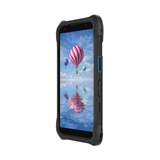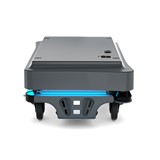So what happens if you build a better light bulb? Or something that is not strictly speaking a light bulb, but provides illumination nonetheless? Something that can be applied to ceilings and walls to emit light, or even to roofs to generate electricity? Something made from plastic?
This is the world of plastics electronics, an advanced field of polymer science that pundits say is on the verge of global commercialisation, based on groundbreaking work, much of which is being done in Australia.
At the Commonwealth Scientific and Industrial Research Organisation (CSIRO) in Melbourne, theme leader for flexible electronics Dr Gerry Wilson sees applications like lighting and solar power as the stimulus for new manufacturing initiatives locally.
"From the CSIRO's point of view, the reason we embarked on this four or five years ago was on the premise of what we could do to transform part of the manufacturing industry in Australia," Dr Wilson said.
Plastics electronics applications being developed by the CSIRO are designed to enable existing manufacturers to "ease them into something in the future that will pretty much have no barriers to entry."
Dr Wilson said a lot of the work in plastic electronics in recent years had been dominated by the development of so-called OLED screens, or Organic Light Emitting Diodes for use in high definition televisions and screens on mobile phones and E-readers and similar hand held devices.
While OLED screens are already popular in mobile phones and in certain automotive applications, he said commercialisation of the supreme OLED application was close.
"The Holy Grail of OLED, and it's not that far away, is a fully high definition television screen that you can roll up and put in your pocket," he said.
Clearly, market applications like flexible hand held devices and cheap, easily applied solar cells underpin a market that looks set to grow exponentially.
A December 2009 report titled "Plastic Electronics Strategy for Success: Realising the UK Potential" estimated that the global market for plastics electronics was valued at almost $2 billion and could grow to $120 billion by 2020.
However the road ahead is not without potholes. Late last month Toshiba ditched plans for a factory that would have spat out 1.5 million Organic Light Emitting Diode (OLED) displays for mobile phones per month in favour of Liquid Crystal Displays (LCD).
Choosing the right application is critical and it's a theme that's at the forefront of work being done by Dr David Jones of the University of Melbourne's molecular science and biotechnology institute.
Dr Jones is working with industry through the Victorian Organic Solar Cell Consortium (VICOSC) on plasticised solar panels that can be affixed to roofing materials.
"Our major industry partner is BlueScope Steel and they would obviously like the solar cells attached to its Colorbond roofing material when it is sold," he said.
Dr Jones and the VICOSC partners are looking to make the process as easy as possible for industry to implement, just like his counterpart at the CSIRO.
"They won't have to spend million to build a new plant," Dr Wilson said. "If they have a high tech printing machine, they can do it."












-160x160-state_article-rel-cat.png)




-160x160-state_article-rel-cat.png)




